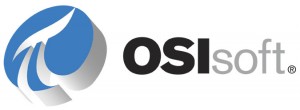This blog is an excerpt from GovLoop’s recent industry perspective, Achieving Real-Time Situational Awareness. Download the full perspective here.
Federal government budgetary constraints and new regulatory guidelines demand that agencies and departments do more with less while still meeting fluid mission objectives. The federal government now must meet more stringent mandates to create and maintain the security and resilience that directly supports current and continuous critical business processes as they protect assets, services, functions and employees. Agencies must continually innovate, improve, and streamline their operations to ensure mission success. The key to this success relies heavily upon the continuous improvement of operations by ensuring trusted operational data.
But this feat can be extraordinarily challenging if the data that holds the answers is scattered amongst disparate systems, formats, and processes. Add the recent technical demands presented by the Internet of Things (IoT), with its inherent complexities of connecting to hundreds or thousands of assets, and one can appreciate what government agencies are facing.
Enter the PI System by OSIsoft – a long-proven and vendor-agnostic commercial-off-the-shelf (COTS) software infrastructure that connects sensor-based data, operations and stakeholders to enable real-time operational intelligence.
In this industry perspective, GovLoop partnered with OSIsoft to learn more about the PI System and how it’s helped their government partners deliver greater operational improvements and breakthroughs that ultimately lead to comprehensive enterprise transformation.
OSIsoft’s PI System collects, analyzes, visualizes and shares large amounts of high-fidelity, time-series data from an enormous amount of sources to stakeholders and systems across all operational technology (OT) and information technology (IT) operations. IoT necessitates the need for agency leaders and managers to find ways to support and enhance mission objectives. Legacy architectures continue to morph with the addition of new sensors, new systems and as a result, system sensor mosaics are continuously created. “The miniaturization of sensors, the lower cost of sensors and the fact that everything new – including building supplies, vehicles and weapon systems – comes equipped with sensors has resulted in a proliferation of complex sensor data that can be turned into insightful information,” said Steven J. Sarnecki, Vice President, Federal with OSIsoft.
Sensor-based data, however, is only one of the many types of data used to support decisions. Although many industries recognize the value of combining operations and business data, differences in function, technology stacks, technology protocols, and cultures have created significant barriers to OT and IT convergence.
To derive insights from data across an enterprise, a data infrastructure that allows decision makers to centralize data silos is needed; true enterprise situational awareness is a must. This data infrastructure must provide one version of the truth, enable data governance and provide data context and accessibility to operational data from all assets across the enterprise. Organizations must have the ability to use operational intelligence to create holistic enterprise intelligence. To enable the enterprise to clearly understand and make impactful decisions regarding operational costs, value and return, enterprise operations data needs to be combined with business data. By adopting a data infrastructure for managing operational intelligence and integrating it with business information, both operations and leadership can transform their world with data.
OSIsoft bridges the gap between OT and IT with the PI System. The PI System is an interoperable, open data infrastructure that connects stakeholders, assets and sensor-based data in real-time for cogent, accurate, and forecasted decision making; sensor-data analytics that directly supports mission assurance.
Currently, the PI System partners with government agencies from the Department of Energy (DoE), National Aeronautics and Space Administration (NASA), and Department of Defense (DoD), to the National Institute of Standards and Technology (NIST), and select Intelligence and National Security Community (INS) agencies to ensure that their critical assets and physical and logical infrastructures are secure, reliable, safe, and cost-efficient.
Due to OSIsoft’s long standing as a leader in the community, the PI System has a variety of connection capabilities, which include close to 500 different interfaces. These allow the system to access a huge diversity sensors that are found on the majority of operational and business data sources, including Supervisory Control and Data Acquisition (SCADA) systems, Distribution Control Systems (DCS), Programmable Logic Controllers (PLC), databases, text files and HTML pages.
The Components
PI Interfaces: Data originates from numerous sources; as such, the almost 500 interfaces connect to an incredibly wide range of data sources used by the federal government. The PI Interfaces buffer data and then translate diverse communication protocols and collection intervals so all the data speaks a common language. “One of the nice things about the interface is, if for any reason there is a break between the interface and the PI Server, the data is buffered and held until communications are restored back to the PI Server,” said Bob Conroy, Senior Account Executive for Civilian Agencies with OSIsoft. “So, one now has a level of data integrity right at the data source in the interface that’s converting data into the PI protocol.”
PI Server: Enterprise systems are constantly creating data. The PI Server collects large volumes of sub-second data and stores more than 20 million streams of high-fidelity data. The PI Server provides operational context to raw data streams. An asset-based metadata layer organizes data by asset topology, so that data retrieval is more intuitive to users across the enterprise. The PI Server also includes auto-event capture, streaming, asset-based analytics, notifications and performance-monitoring tools.
PI Tools: Stakeholders need tools to collaborate around data and information. Thus, PI Client Tools provides visualization and analysis for stakeholders across an organization and includes:
- Graphic displays
- Automated analysis and reporting spreadsheets
- Web-based, ad hoc trending that can be visualized on multiple devices
“The PI System connects to all the data sources our government partners have today, the systems they’re installing, and systems they’re going to install next month or next year that they haven’t even figured out yet,” said David Doll, Industry Principal for Facility and Energy Management with OSIsoft. The data is collected in its original format without requiring custom coding or large development projects to get value out of the data. What’s more, administrators can feed data into their business intelligence systems or enterprise resource planning systems through configuration, not custom coding.
To learn more about how you can achieve real-time operational intelligence and a holistic view of your agency’s data, download the full perspective here.






Leave a Reply
You must be logged in to post a comment.